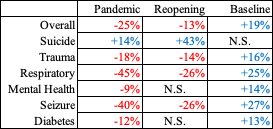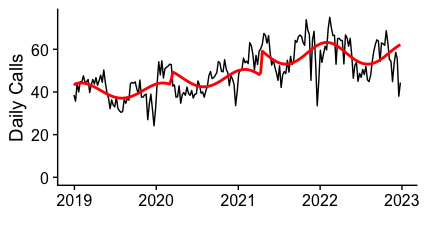Emergency Medicine
Session: Emergency Medicine 7: Emergency Medical Services
221 - Epidemiologic Changes in Emergency Medical Services Activations for Children in the United States during the COVID-19 Pandemic and Reopening
Sunday, May 5, 2024
3:30 PM - 6:00 PM ET
Poster Number: 221
Publication Number: 221.2027
Publication Number: 221.2027

Arvinth S. Sethuraman, MD (he/him/his)
Pediatric Resident Physician
University of Texas Southwestern Medical School
Dallas, Texas, United States
Presenting Author(s)
Background: The COVID-19 pandemic brought significant changes in the epidemiology of common illnesses that affect children that result in emergency medical services (EMS) utilization. Our study is the first to describe changes in the national epidemiology of pediatric EMS calls during the COVID-19 pandemic and after re-opening following widespread availability of the COVID-19 vaccine.
Objective: Describe changes in EMS call volume for pediatric patients from before and after the onset of the COVID-19 pandemic and after availability of the COVID-19 vaccine (“reopening period”).
Design/Methods: We used data from the 2019-2022 National EMS Information System (NEMSIS) dataset which includes more than 90% of all EMS activations in 47 U.S. States and Territories. We included all primary EMS activations regarding children under 18 years for all causes (N=6,246,113). Data was segmented into three periods, Pre-pandemic, Pandemic and Reopening, based on cutoff dates of 03-11-2020 (date of World Health Organization pandemic declaration) and 04-16-2021 (date of widespread COVID-19 vaccine availability for all American adults). We used generalized linear models to estimate the effect of the Pandemic and Reopening periods on daily call volume, adjusting for baseline trend over time, yearly seasonality and weekday effects. Models were pruned based on bayesian information criteria (BIC) to reduce overfitting and model complexity. Analyses were also repeated for subsets of encounters with diagnoses or symptoms corresponding to suicide, trauma, respiratory distress, mental health, seizure and diabetes. P < 0.0001 was considered significant to account for multiple testing.
Results: There was a baseline trend of increasing daily call volume over time (+19% per year from 2019-2022) with increases in all subgroups except suicide (Figure 1, Table 1). The Pandemic period was associated with decreased daily call volume overall (-25%) and in all subgroups except suicide, though was attenuated in the reopening period (-13%). The Pandemic period was associated with increased daily call volume related to suicide (+14%) and there was a larger increase in the reopening period (+43%, Figure 2).
Conclusion(s): There is a trend of increasing pediatric EMS call volume over time, though with decreases during the Pandemic that were attenuated during Reopening. Pediatric EMS activations for suicide did not follow this trend and have risen significantly after reopening.
.png)


